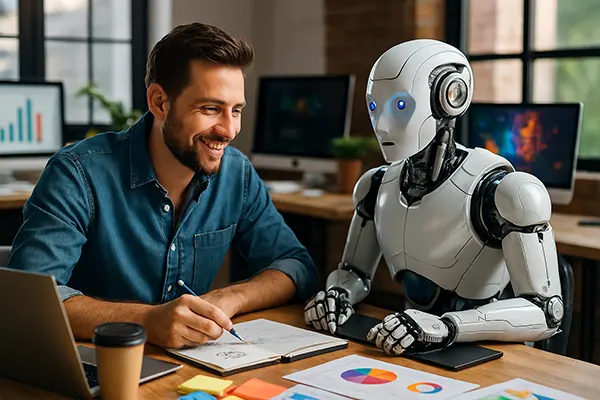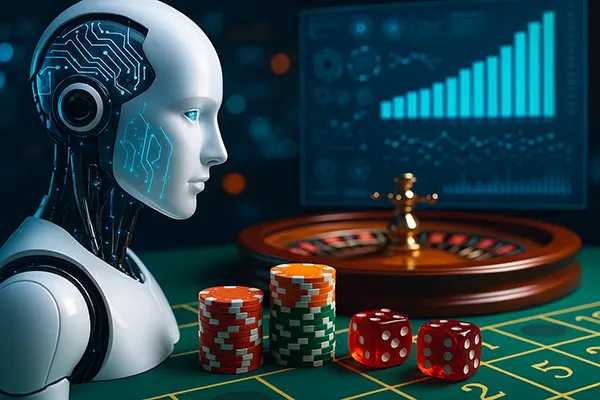
How Marketers Are Adapting to Generative AI: ChatGPT, Midjourney and the Automation of Creativity
As generative AI tools become increasingly capable, marketing professionals across industries are rethinking their workflows, strategies, and creative processes. With tools like ChatGPT and Midjourney reaching new heights of sophistication by early 2025, the challenge is no longer whether to adopt AI, but how to integrate it meaningfully into daily operations while preserving brand authenticity and effectiveness.
Generative AI as a Creative Assistant
For many marketers, tools like ChatGPT have transitioned from novelty to necessity. This large language model, developed by OpenAI, is now commonly used for drafting content outlines, generating ad copy, answering customer questions, and creating social media posts that align with brand tone. By February 2025, newer versions of ChatGPT even include integrated brand voice training, enabling companies to embed style guides directly into the model’s prompt memory.
Meanwhile, Midjourney and similar platforms like DALL·E 3 and Adobe Firefly have given rise to rapid, high-quality image generation. Graphic designers now use these systems to produce mockups, visual concepts, and even full-scale campaign imagery within hours, bypassing long design cycles. This allows teams to iterate more frequently and test visual content more effectively.
Importantly, AI is not replacing the marketer—it’s enhancing their efficiency. The role of the human remains central: refining ideas, directing tone, and ensuring content aligns with strategic goals and ethical standards. AI handles the heavy lifting; humans drive the direction.
Shifting Creative Workflows
The traditional marketing funnel has evolved significantly with the rise of AI. Brainstorming sessions are now frequently AI-assisted, where tools propose initial themes or taglines based on market data and previous campaigns. This speeds up ideation and often introduces unexpected angles marketers may have overlooked.
Copywriters increasingly rely on AI to produce first drafts or repurpose content across channels. A blog post can be turned into an email campaign or a short-form video script with minimal human intervention. However, the final content is still carefully reviewed to maintain originality and comply with brand guidelines.
Visual teams also benefit from AI tools that can simulate lighting, modify brand colours, or swap product backgrounds in seconds. Rather than replacing designers, this frees them to focus on high-level creativity, design cohesion, and campaign strategy.
Automation and Real-Time Personalisation
By February 2025, marketers have begun using generative AI to support real-time personalisation across websites, apps, and email funnels. Using user data, AI tools dynamically adjust content blocks, product recommendations, and headlines in milliseconds, creating hyper-relevant experiences without manual coding or segmentation.
For instance, e-commerce platforms now leverage AI to generate unique product descriptions for each customer segment, adjusting tone and emphasis based on behaviour, geography, or purchase history. This results in higher engagement rates and more accurate messaging that feels tailored rather than templated.
Moreover, chatbots and voice assistants powered by tools like ChatGPT are becoming indistinguishable from human agents. They resolve queries, offer support, and cross-sell with contextual intelligence that was previously unattainable in automated systems. These bots can even detect sentiment and adapt tone accordingly, improving user satisfaction.
Challenges in Implementation
Despite the benefits, integration of generative AI is not without its hurdles. One major concern is content originality. Marketers must ensure outputs are not only unique but also legally compliant, especially when using image generators trained on third-party assets. Copyright risks remain a key area of concern in automated creative workflows.
There’s also the challenge of over-automation. Brands that rely too heavily on AI risk producing content that feels sterile or generic. This is particularly true when personal stories or emotional resonance are needed—areas where human input is vital and irreplaceable.
Additionally, some organisations struggle with internal alignment. Not every team is comfortable or ready to adopt AI tools, and proper training, ethical guidelines, and clear governance structures are essential to ensure responsible use.

The Future of Creative Marketing
As we move further into 2025, the expectation is not for AI to completely take over the creative process but to serve as a powerful, adaptable co-pilot. Future marketing departments will likely be structured around hybrid roles, where technical fluency in AI tools is as important as creativity and communication skills.
New job titles like “Prompt Strategist,” “AI Content Curator,” and “Synthetic Media Analyst” are already appearing in major companies, reflecting a shift toward collaborative human-AI creativity. Universities and training platforms are also offering certifications in AI-powered marketing, setting new industry standards for expertise and competency.
Furthermore, ethical considerations around bias, data privacy, and transparency will shape how generative AI is used in marketing. Regulatory bodies in the EU and US are already moving to require disclosure when content is AI-generated, which will influence how brands communicate authenticity and build trust with audiences.
Preparing for a Collaborative Future
To thrive in this new landscape, marketers must embrace lifelong learning and be open to experimentation. AI will not replace the essence of human creativity, but those who combine intuition with intelligent tools will gain a competitive advantage.
Brands should establish internal AI policies that cover transparency, responsibility, and continuous model evaluation. AI-generated content should be reviewed through both ethical and strategic lenses to ensure it reflects the company’s mission and values.
Ultimately, the most successful marketers of 2025 will be those who understand that AI is not the endpoint of creativity—it’s the next stage of its evolution.
Popular
-
 The Future of Corporate Philanthropy: How ...
The Future of Corporate Philanthropy: How ...Corporate philanthropy in 2025 has moved far beyond traditional donations, evolving into …
-
 Micro-Budget Marketing Campaigns: How Smal...
Micro-Budget Marketing Campaigns: How Smal...In a market dominated by industry giants with massive advertising budgets, small …
-
 Artificial Intelligence in Online Casino M...
Artificial Intelligence in Online Casino M...Artificial intelligence (AI) has transformed how online casinos analyse player behaviour, optimise …
-
 Ethics, Responsible Engagement, and Transp...
Ethics, Responsible Engagement, and Transp...The digital world of 2025 has placed ethics and responsibility at the …
